21 Sep 2020
Interview
EEVA MARJA RÖNKÄ & JANI ANDERS PURHONEN: WINE, POETRY, AND TRYING OUT WHAT FITS BEST
Between June 3rd and August 26th, 2020, collaborative duo Eeva Marja Rönkä and Jani Anders Purhonen took their practices to the studios in Suomenlinna, while also initiating a nano art space located in the industrial area of Roihupelto, Helsinki. Their work together and individually consists of texts, poetry, textiles, choreography, photography, comics, community arts, curating, and sound art, as well as research. Through this body of work, the pair is interested in exploring unconventional art spaces and re-evaluating exhibiting conventions.
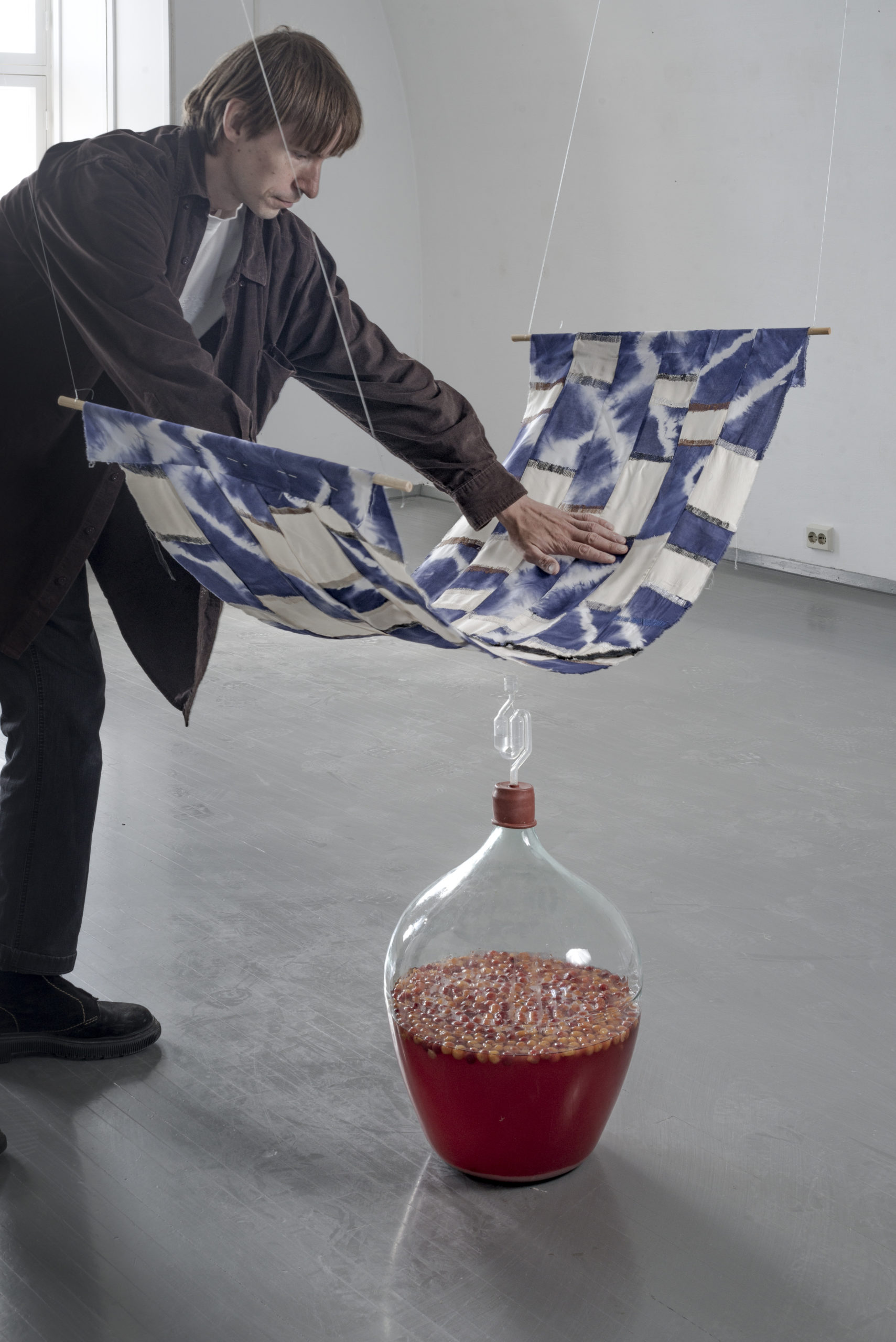
Textile works by Eeva Rönkä. The wine is Eeva and Jani’s summer home wine brewed at HIAP studios from flowers (malva, thistle and burdock) and tart cherry. Photo by Sheung Yiu.
AA: You come from different artistic backgrounds and use various media in your art: textiles, poetry, bread. Does an interest in patchwork and fragments refer to the diverse nature of your work or is it a nod to textile art specifically?
ER & JP: The latter. In textile patchwork allows you to explore nuance and endless variations of atmospheric interactions of different materials. Though now that you bring it up, there may be a connection between patching literally and letting various practices align within one’s artist practice. A nod to medium-independency. A patchwork of techniques.
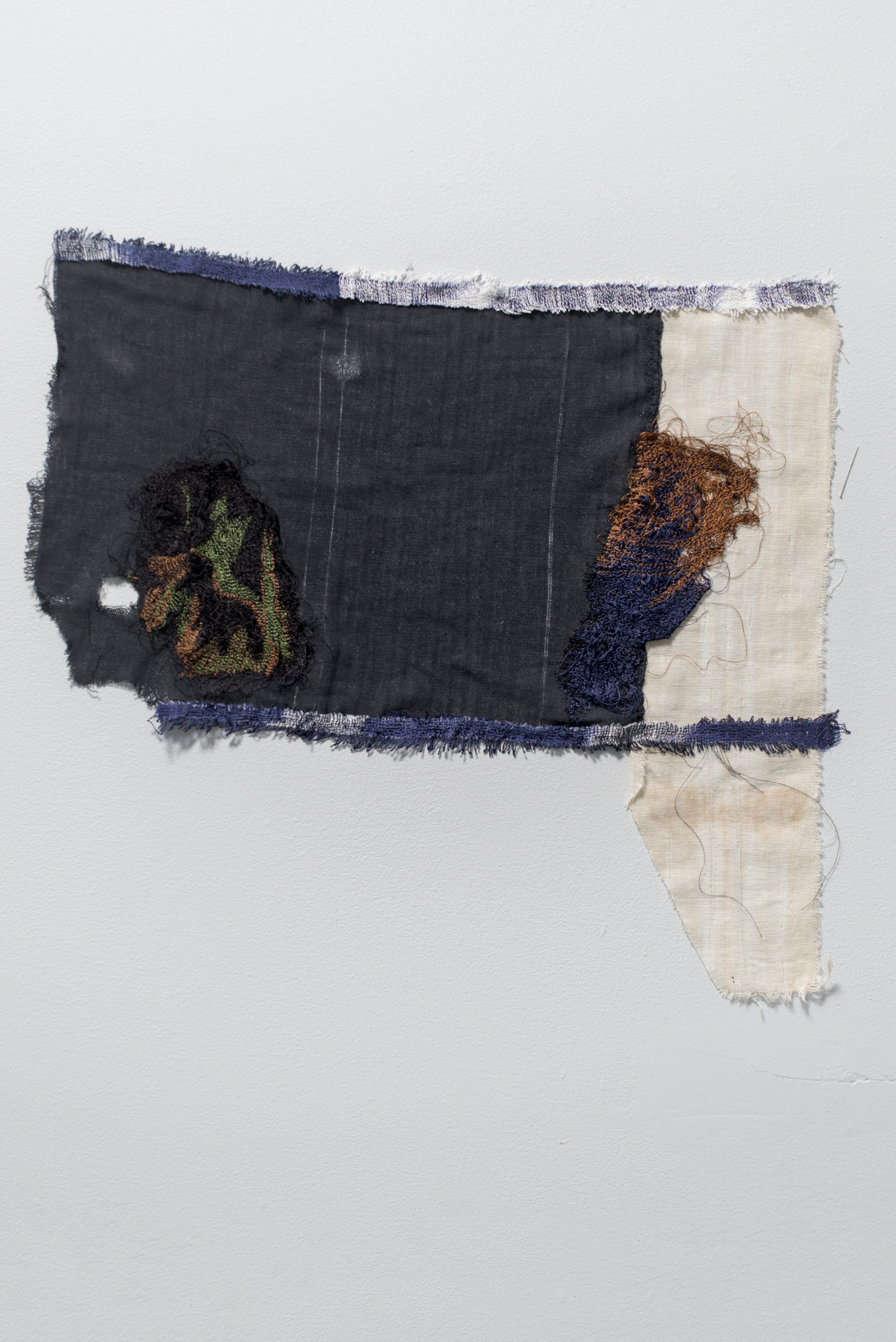
Textile works by Eeva Rönkä. Photo by Sheung Yiu.
AA: How did you decide to embark on this journey together? Do you work together, more collaboratively, or do you split duties?
ER & JP: Our first collaboration was a photo series for the Craigslist Suomi platform, which is a combination of a kind of homage to garments we love but don’t use anymore and an excuse to take pictures in interesting locations. We try out what fits best as we are drawn to different aspects of the work. For example, in writing, where one might produce text frivolously but the other is able to concentrate on the final form. There’s always some split until you’re in the zone and expectations are dropped.
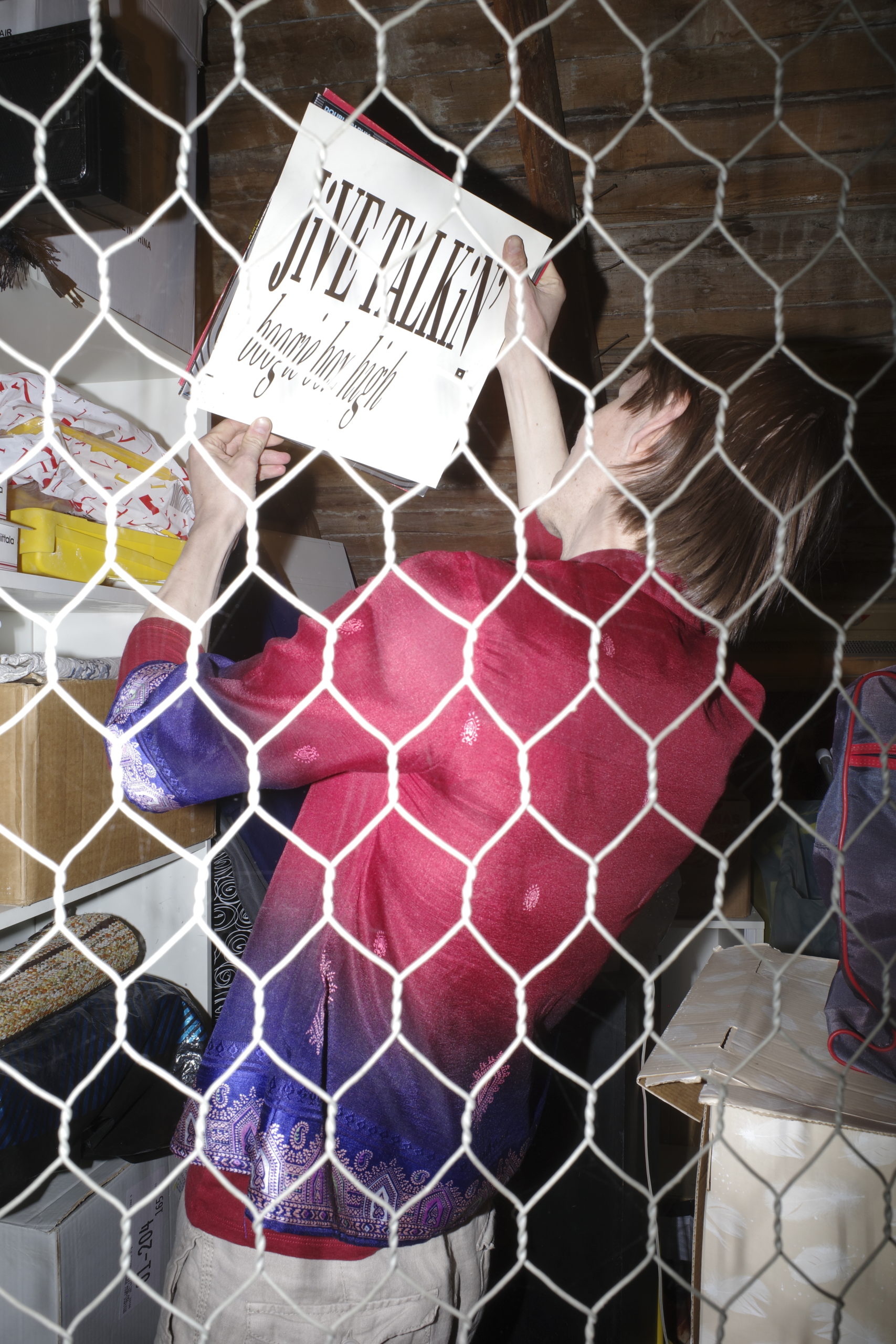
Details from craigslist. A collaborative photo project between the Eeva and Jani, initiated during the pandemic. Photo by Eeva Rönkä.
AA: In what ways do you intend to challenge exhibiting conventions, especially with your nano space BEBETTON?
ER & JP: With BEBETTON, we initially wanted to make use of some dead space in our studio building in Roihupelto. We invited two artist collaborations to show their current projects in the sauna lounging area. The space could transform so nicely into a hangout where we would serve concoctions of our own making (home wine). It felt like a valid starting point when even artist run art spaces bias toward commercial structures that end up essentialising art and creating boundaries around it. These may involve choice of location, standard opening hours, communication lingo, etc. Small gestures you could rethink, thinks Bebetton.
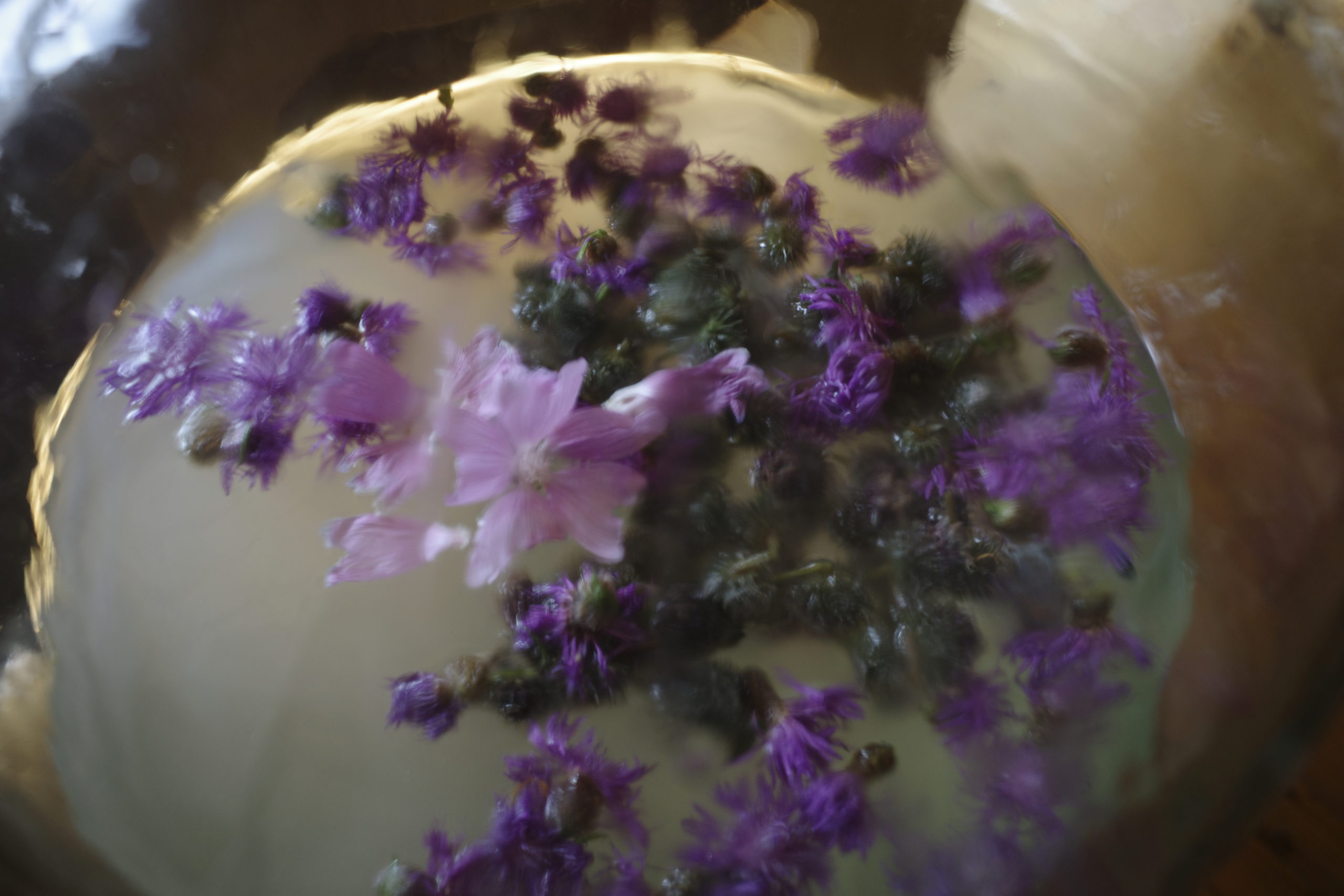
Detail from BEBETTON open studios event. Photo by Jana Slaby.
AA: When working with text and textiles, the poetry almost feels remade to reveal something new. In your work, how do text and imagery find each other?
ER & JP: In Eeva’s case, writing emerges mostly from vibes and environments. Her textilemaking is likewise an intuitive process. Jani’s recent work ‘Twins (fermenting)’ featured a tiny text screen updated from a distance, as thoughts evolved in tandem with the microbial life inside the installation’s fermentation casks. Together, we’re currently producing a publication that weaves together texts from a group of writers around the theme of wine.
AA: You are interested in unconventional spaces. Could you give us an example of an actual physical space that is unconventional, and also a space which is not a physical space but rather a platform for creating work?
ER & JP: There was this artist, Hubert Crabières, who Eeva met who’d been travelling in Japan and didn’t find a place to exhibit their photographs, so they made an exhibition inside flowers on the street. It’s like a virtual platform you enter by shifting the scale of your perception. Just hearing about it makes you work within that space by imagining new things.
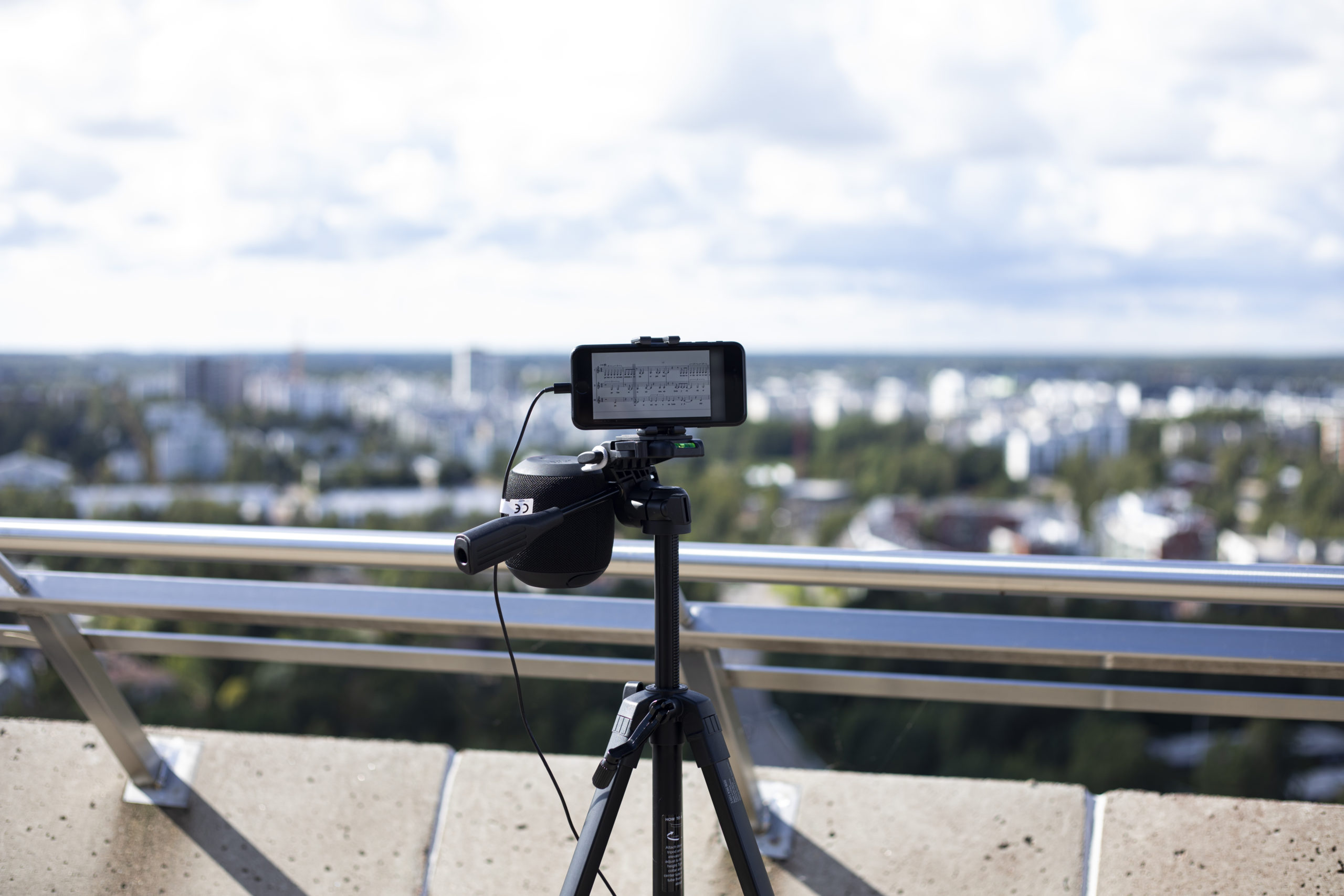
Details from “Big Wet”, a group show at a water tower. Photo by Venla Helenius.
Photos provided by the artists.
Read more:
